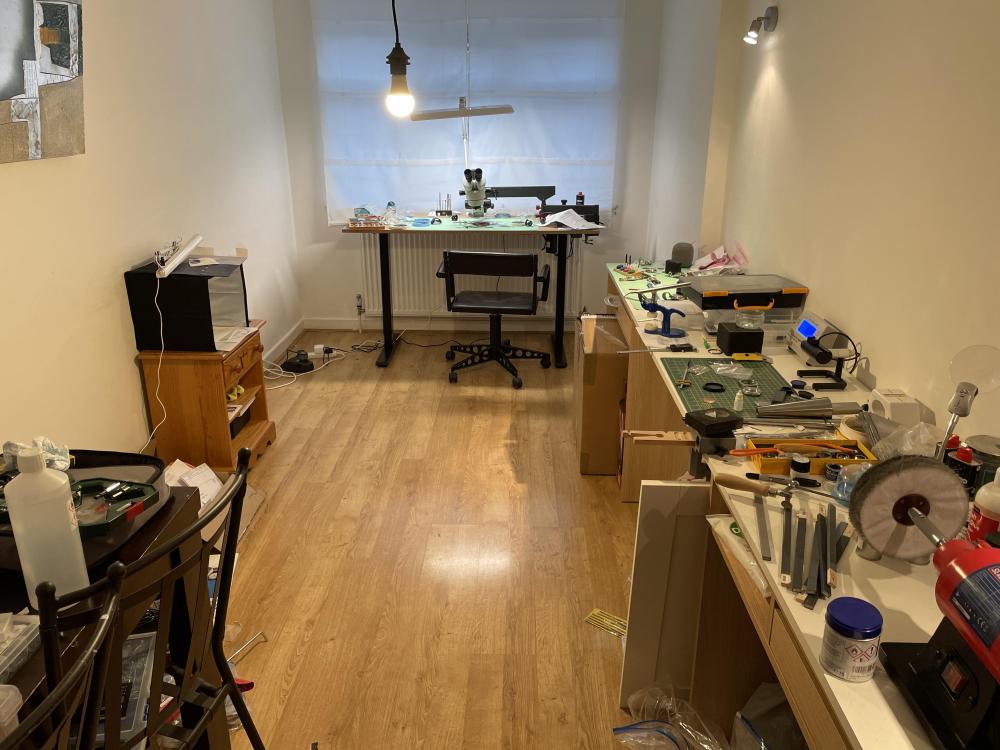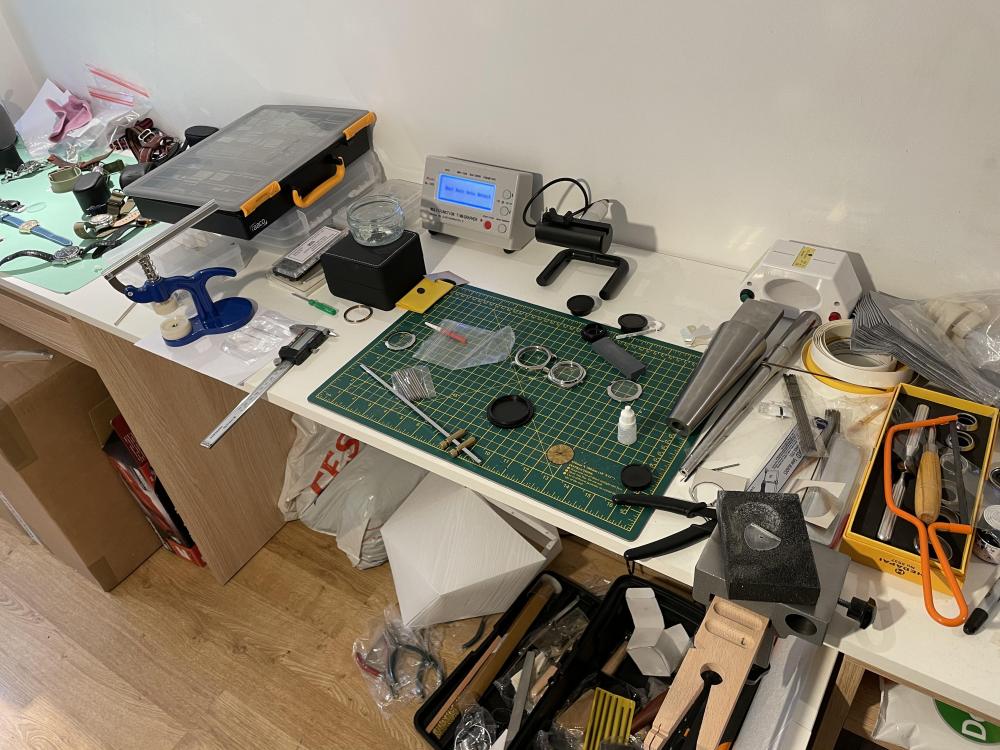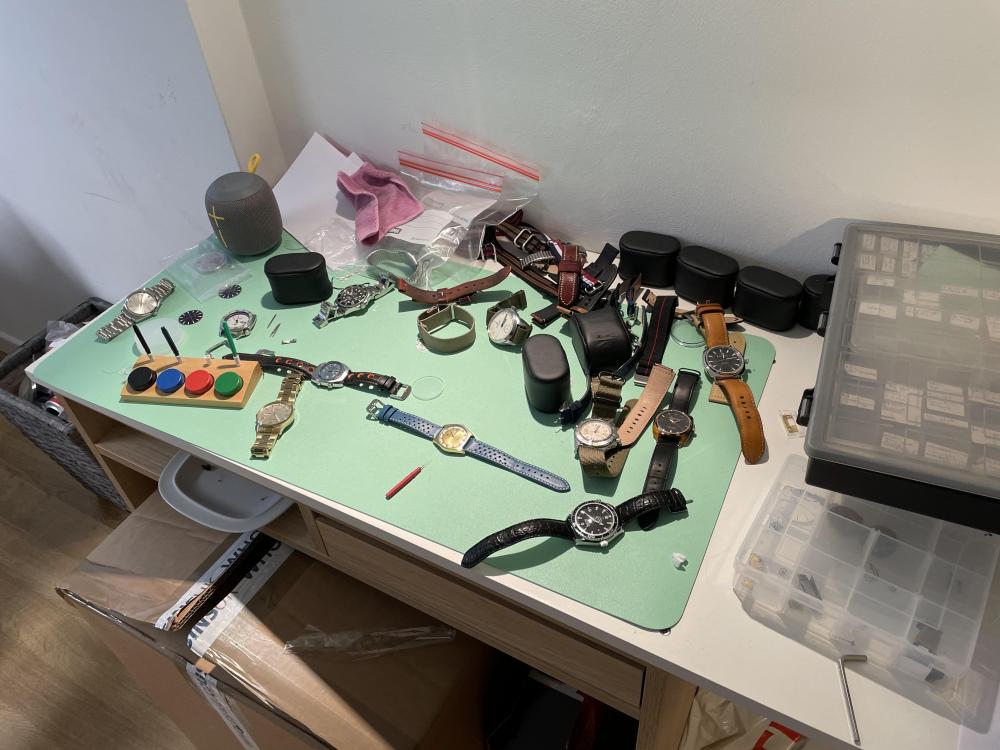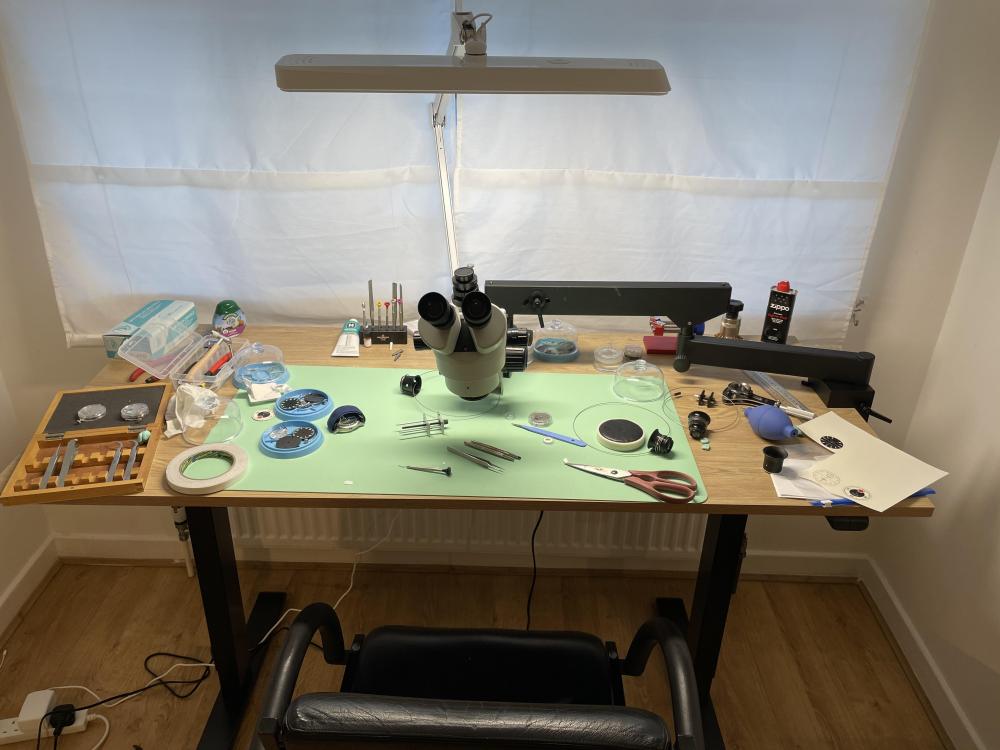Leaderboard
Popular Content
Showing content with the highest reputation on 12/19/21 in all areas
-
Hello All Members I should like to extend to you Old and New A VERY MERRY CHRISTMAS and a HAPPY NEW YEAR and continued enyoyment in the horoligical journey. Enjoy the season and the coming year The Watch Weasol5 points
-
If this was the case then you would expect to see very high amplitude or even re-banking (where the balance amplitude is so high that the impulse jewel crashes into the outside of the fork horns). Your problem is the opposite, the balance wheel amplitude is too low, which could be as a result of too weak a main spring, or excessive losses within the train or the escapement, or both.2 points
-
The jewel and shock spring should be replaced and terminal curve sorted out. Good luck2 points
-
First of all I would like to thank everyone for such detailed and interesting replies. I haven't been a member of this forum for long, but the one thing that really stands out is the tolerance and acceptance for differing view points. It really is a genuine pleasure chatting to you all. I have been a member of numerous forums over the years, and there aren't many others where such respect is shown for fellow forum members. Second -spectre6000 - would you like to swap lives with me? Yours sounds very exciting. I live in the city, and the only thing I fight on a daily basis is traffic and queues. But in all seriousness there are some very valid views here.I guess I wasn't really considering the toughness of a sapphire crystal in my rant. They are extremely practical but I never look at one and think "Wow! that is stunning!". Maybe they do exist and I just haven't come across one yet. Spectre - I do totally agree with you in the use of plastic in watches. I just pretend they aren't made out of plastic. Klassiker - Ive just googled that Nomos. What a beautiful watch.2 points
-
Because I work on these movements often and I'm very familiar with them, right from the Kif flexor balance cap jewel, the Breguet overcoil, the triangular stud and the support. the poise and timing screws. No one is going to this length to produce a fake form the late 50's and make it look that age. This movement is definitely the real thing. Here's a couple of photos from one I worked on last week. It's a 1210 calibre, although it is actually a 1215 base but it doesn't have the calendar work or date window2 points
-
1 point
-
I encountered an identical issue a couple months back. I emailed Dave from Dave's Watch Parts and he had at least one spare but from his response sounded like more than one, cost $20 plus shipping if I remember correctly. I'd give him a try if I were you.1 point
-
Ok, here's a long and winding road; I'm guessing you mean an 11ALACD, in which case the base model stem is 11AF. In the 11AF, the #16C Female stem shows lengths 10.30 and 11.28, and refers to the basic model 11AC Looking up the 11AC, it shows lengths 9.95, 10.30, and 11.28. I'm going to go out on a limb say that an 11AC female stem #16C of the correct length should work. Either 10.3, or 11.28. Not sure how to measure to determine which one is correct. Good Luck! By the way, do you ever go to the NAWCC Milwaukee chapter meetings? I may try to get to one at some point.1 point
-
Great looking early non shockproof movement with an 18 jewel version and a different design on the balance. One thing one has to be careful of is the wrong 'wheel over third' as I call it. That's the wheel staked to the third wheel arbor can be replaced with a wheel that doesn't have the correct teeth count, thus, not meshing with the sweep second pinion correctly and creating a stutter on the second hand. It's not backlash (flutter), as there is to much gap between pinion leaf and third wheel teeth and no amount of brake spring pressure will alleviate the problem. The second hand then doesn't move 2.5 times a second and has no 'sweep'. It looks more like a quartz watch second hand, so heads up on that!1 point
-
You need to sort out the amplitude a bit. Your video is showing somewhere in the region of 180 to 190 degrees so timing is going to be somewhat difficult, you need to be hitting a very minimum of 220 degrees. Then before you start altering anything irreversibly take a really close look at the balance. Has somebody added any extra weight (timing washers) in the past to slow it down. If the H/S comes pre-studded for a particular calibre then it should be reasonably close unless the balance wheel has been messed about with. Afterall there would be little point in supplying it studded if you're only going to have to remove the stud and re-attach it having shortened the H/S1 point
-
1 point
-
1 point
-
Remove these 3 bridge, barrel bridge, train gear...., cock to gain access to the bottom of the foot , push on the the bottom with a thick needle , you may need to tap to punch the foot out.1 point
-
Always helpful to define horrible performance? Because everybody has a different terminology of horrible performance or at least everyone can have a difference. The hairspring distortion is interesting in that yes it's there. But how bad is it really? I was looking at the video and not sure how big of a problem it really is. It does need to be fixed though but? The video is interesting in that they hairspring appears to be centered doesn't look as bad as some hairsprings I've seen. It would be nice to have they couple of pictures of the balance wheel in the watch looking straight down and some looking in sideways. In other words if you look in is your hairspring flat or is it touching the balance arm for instance? This is always the problem with looking at hairspring is out of the watch, out of the watch they're not a problem other than visually maybe they don't look wonderful. Which is why we need pictures of the balance wheel in the watch so you look at they hairspring and see how it looks there.1 point
-
1 point
-
Since it has an handle, doesn't catch dirt, and lasts forever, it's better than rodico for this task.1 point
-
You mean like this? I don't see how it would be superior to a twisted nodule of rodico. https://www.amazon.com/Uchida-America-91GR-Double-Picker/dp/B00NL5LTO2?th=11 point
-
To be able to diagnose you need to fully understand how a watch works and how the various parts interact. A good start is to gradually take it fully apart and gradually reflect upon the purpose and function of each part. Also, read as much as you can (WRT is a good place) and there are plenty of great watchmaking channels on YouTube. We're not going to be able to provide any help unless you provide pictures and specifics.1 point
-
You mean vice? Well, I quit smok'n, drink'n and chas'n women, so I am on the mend. I am using both colors. On the two watch benches where I do watch work, I am using green. On the watch bench with the lathe, I am using black. I think, qualitatively, that the black does reveal shiny objects better than the green. I know this because all of the swarfs from turning are readily seen. So, why don't I use the black one for working on watches? I probably would if I did not already have the green in place. There may be a great deal of personal preference that cannot be quantified.1 point
-
I couldn't make my mind up whether this was better posted in the "What have you got coming in the mail" or was more of a "404 Club" thread item. So before I get overwhelmed by choice anxiety, here we go. A "pile of junk" including a couple of pocket watches. The Bernex is the one that caught my eye. The Bernex name appears on some very nice watches. The style suggests 1930s, but it may well be much more recent. 1960s perhaps. I also suspect it is chrome rather than stainless or rhodium, but for the price, I'm hardly in a position to complain. Time will tell what exactly it is. Since it claims to be shock protected, there is a reasonable chance that it simply needs a service to bring it back to life. I should have a suitable bow for it in my stash, and possibly even a crystal, if those marks prove to be cracks. The scruffy pocket watch with the messed up dial is probably nothing special but you never know. The dial is such a mess, that I can't make up my mind if that is a paper replacement pasted in place of an enamel original, or what exactly is going on there. Hopefully the balance is complete, but that is a pretty long shot given the over all condition of the rest of the watch. The Rotary Quartz is possibly an early Swiss quartz, and the Avia 25 jewel automatic might be worth finding a suitable case for if I can make it run. Most of the rest will probably go in the spares pile, unless there is something particularly worth saving. All in the whole lot cost a fiver, therefore whatever is savable almost certainly qualifies for the 404 club.1 point
-
Make sure you don't put the 8 on upside down.1 point
-
I always look for the dot on the balance rim. As I only service my own watches, for any without adjustable stud holders, I accept anything less than about 2ms beat error. You can mess about for ages trying to get it right. And each adjustment risks damaging the hairspring. I just make a note to give it a tweak at the next service. The example I show above of the 5 deg angular error - if the impulse jewel were at 2 mm from the pivot (probably less), then a 1m/s beat error equals about 0.17mm lateral position error in the jewel.1 point
-
This is more of a statement than a question, but I am curious about other experiences. I serviced this watch and ordered a GS DT crystal. It was 0.1 too small, so rather than spend another $15, I got a cheaper Stella (as I recall) crystal that was not designed for divers watches. This is my watch and will probably sit in a drawer when done...so the divers thing was not an issue. When I cased the watch, the movement fell right through!! I thought I had improperly attached the case ring. Nope. This case REQUIRES the tension ring as a backstop to the dial to keep the movement from falling through! The Stella had no tension ring. OK, I am a noob with experience accordingly. But I am surprised that this was designed this way. As a side note...I hope GS keeps making crystals. They are expensive, but in some cases (pun!!) you cannot live without them.1 point
-
1 point
-
1 point
-
1 point
-
Hello Budsy; I'm also new to watch repair and was advised to get some cheap training watches. My goal was to learn as fast as possible on Swizz mechanical movements, so I went after (in my eyes) difficult training material and bought two ETA2540 New Old Stock (N.O.S.) 17.5mm ladies watches. Why? 1) Well, on this forum is a very good "walkthrough" which takes you by the hand and guide you through how to dismantle, clean and assemble them. 2) I went for N.O.S. because they are new and running, so you check your work after you are done. Secondly, the idea is that you repair a watch without leaving scratches behind.....a "ghost repair" so to speak. Since these watches are new, you are the first one to dismantle them, so any scratch, and you know it's yours. 3) I bought two in case I ruined one, so I had "back-up" spare parts. At first attempt to open for oiling, I ruined one leg of a Incabloc spring and during my third assembling (I did multiple "rounds"), I broke a pivot from the pallet. Both valuable lessons of how not to. 4) Since these movements are so tiny, they reveal and expose straight away (and you can practice on) your tool handling skills, quality of your tools, parts handling skills and what you need for doing the job. There is a very good Dutch Seller "Vacheron_nl" on eBay who has these ETA2540 for £7.60 or $11 each, including hour-wheel. To save on postage, you can ask for combined postage. http://www.ebay.co.uk/itm/Tressa-ETA-caliber-2540-N-O-S-Swiss-watch-movement-running-/361474036132?hash=item54298811a4:g:8CQAAOSwFqJWogo- If you rather start gentle with bigger movements and depending on your goal; for the movement of your choice, first find clear information like exploded views, PDF-files or clear walkthrough's. By this you avoid getting stuck at first attempt. Buy running watches and preferable N.O.S. for the reasons given above. These are my "Two cents".........;-)1 point



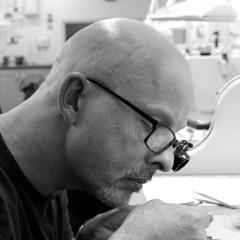
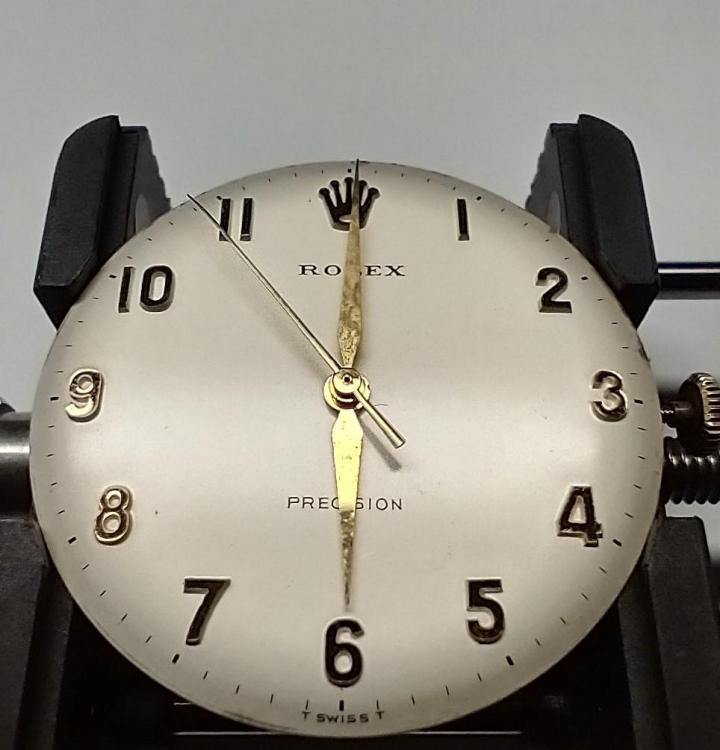
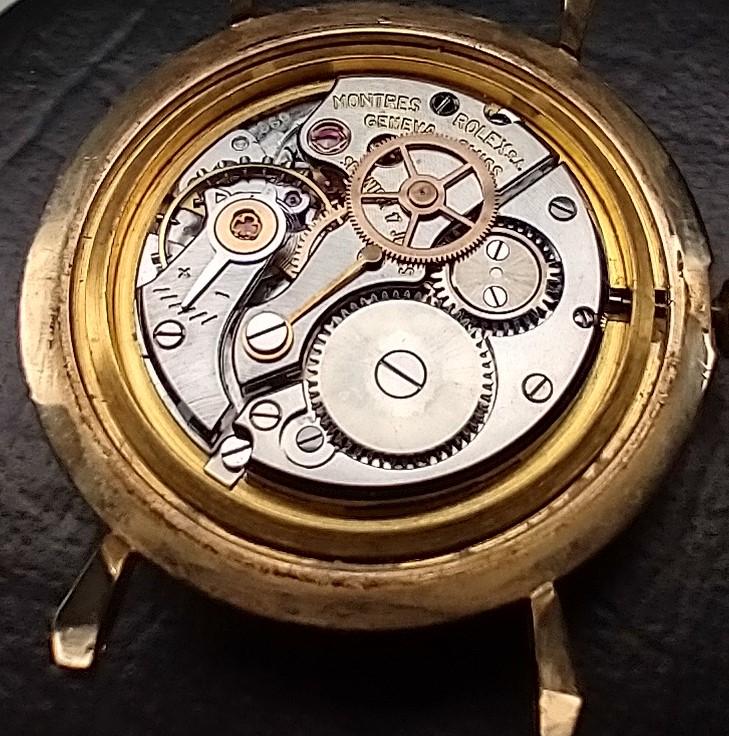

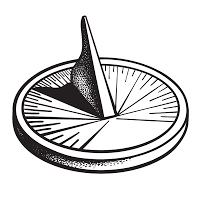
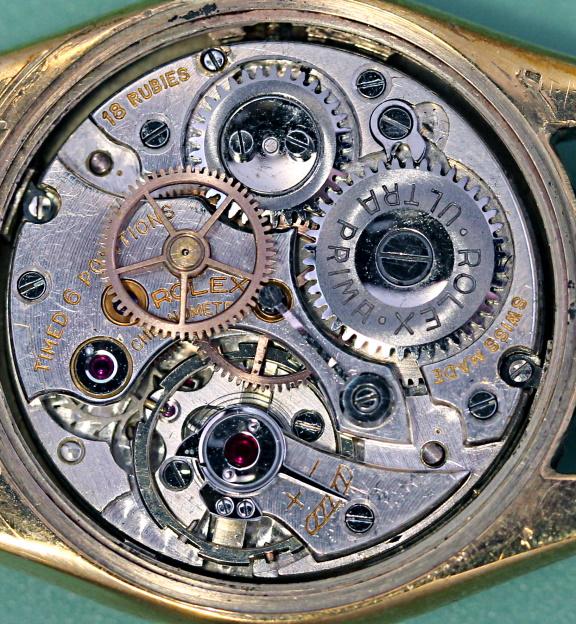





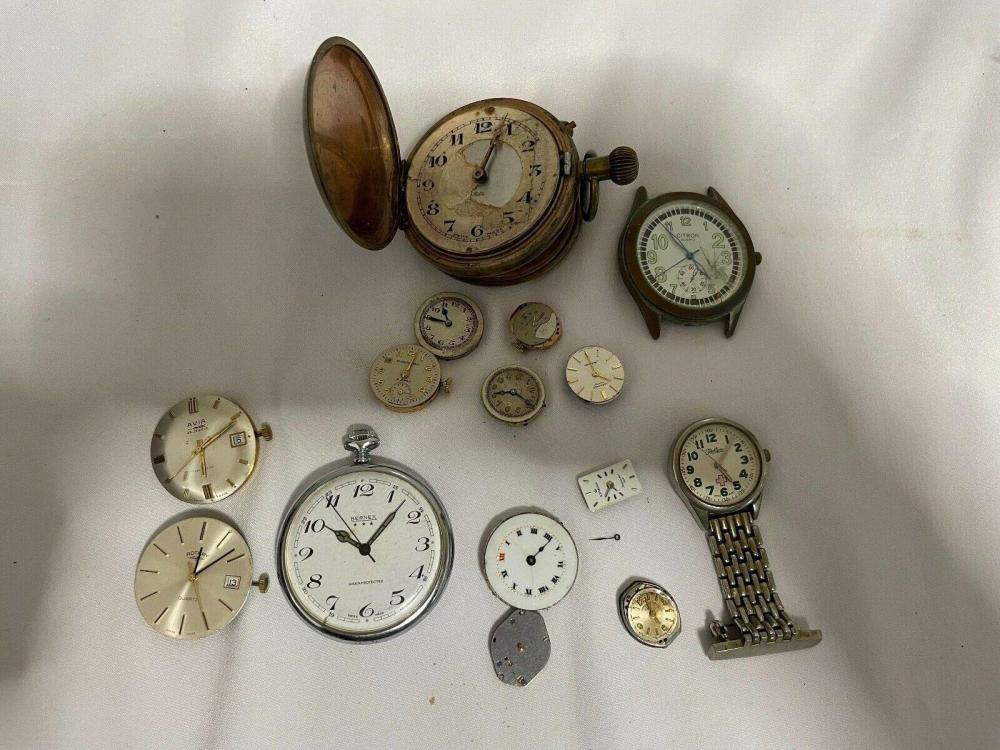
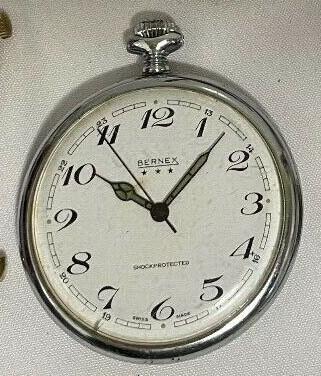
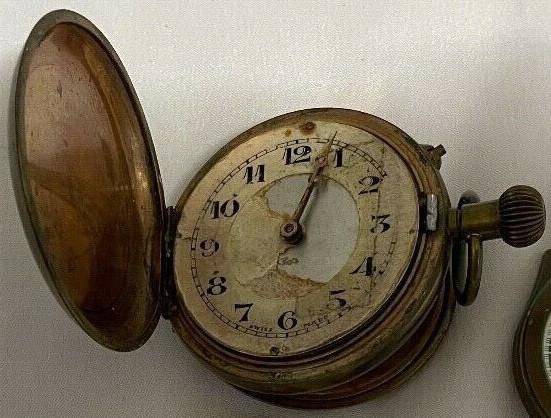

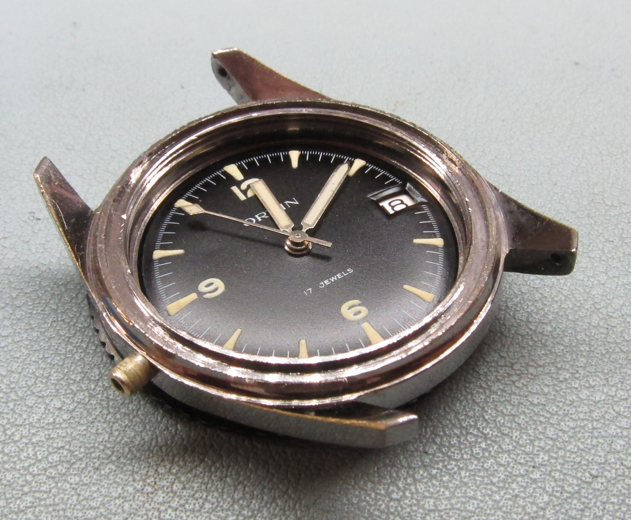

.thumb.jpg.3cad98a9ff77201b699301ef3212357c.jpg)
